10 Functions to Use in Google Search Console

There are a ton of great tools that make SEO issues easier to find and correct.
Not only do third-party tools make diagnosing issues easier, but they also enable easy client reporting. Sometimes you are working on your own site or don't have the budget to use a third-party tool, in those cases, Search Console is a great free resource for improving your SEO. Below we are going to look at some important information you should be reviewing in your Search Console account to improve your website. Let's jump right in!
1. Index Status
Whenever you launch a new website, this will allow you to see if your site is indexed and if so, how many pages are listed. Using the advanced tab, you can also see the number of pages blocked by robots.txt and those removed from the Google index. A large number of blocked pages could mean you have forgotten to remove the no-index, no-follow tags commonly used during development. A large drop in indexed pages show that Google either can't access your pages or that they are not deemed valuable enough to remain indexed. You should check this monthly to see how your site is doing, if new pages are being indexed, and if any pages are accidentally blocking Googlebot.
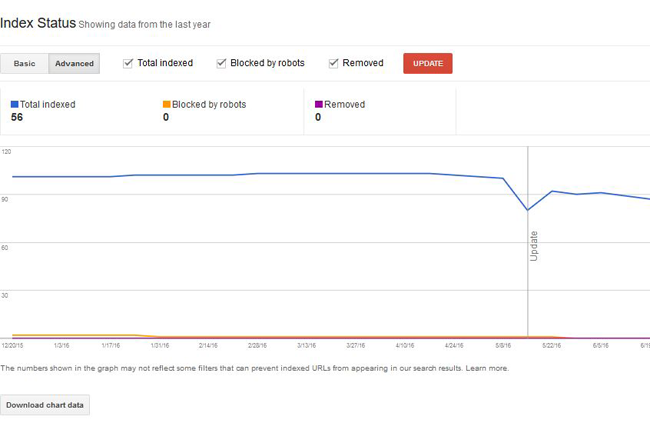
2. Crawl Stats
Do you have a few pages that are really important to your website? Are they close to the homepage? If not, crawl stats can show you how many pages Google visits on average when they come to your website. In the example below, you can see the average number of pages crawled is 11. If you happened to have really important pages 4 levels from the homepage, it is possible they are being crawled often. While many people tell you to post often on your site or blog, they leave out the effect it has on your crawl rate. If you publish five great new articles each day, your crawl rate will be higher than if you post once per month. Recently, Google announced that using "no-follow" directives would not conserve your crawl budget, a common belief among many SEOs. Long story short, check your crawl stats to see how often and how deep Google is crawling your site. If they aren't going deep enough, you need to look at your site structure and rate of content updating.
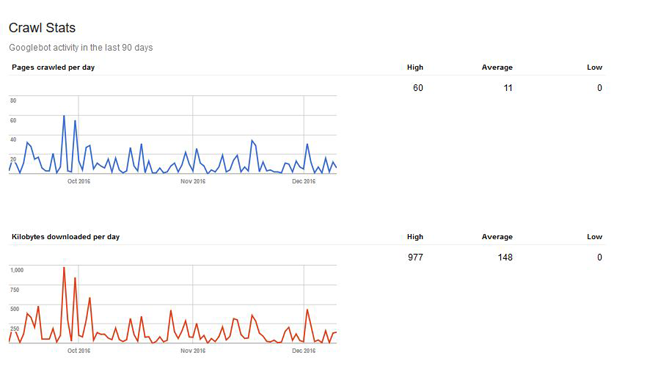
3. HTML Improvements
This section covers basic improvements that can be made to your site. This includes listing duplicate titles, meta descriptions and non-indexable content on your site. When your new site is fully indexed or you are improving an existing site, looking here can give you a punch list of items to fix.

4. Structured Data
Structured data allows Google to better understand the content on your website. If you are a restaurant, this could be hours or reviews. A movie theater would markup show times and dates. The content of your site will determine which structured data items you will need to incorporate. You can set up structured data using the Google Structured Data Markup Helper. Once you have markups in place, check the structured data tool periodically to ensure your information is properly labeled. This is especially important when using plugins for WordPress that automatically generate Schema markup.
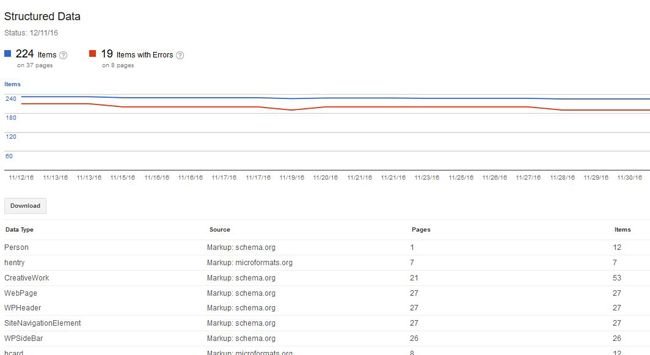
5. Links to Your Site
Not every link built to your site is going to get picked up by Google, even so, they may show up in third-party tools. Using this section will help you see your link profile as Google sees it. This is important for analyzing anchor text ratios, picking out potentially harmful links, and just so that you understand if your site is gaining new links. There is a lag time for links to show up in Google, but we recommend checking your site links monthly so you can quickly find and remove any harmful links pointing to your site.
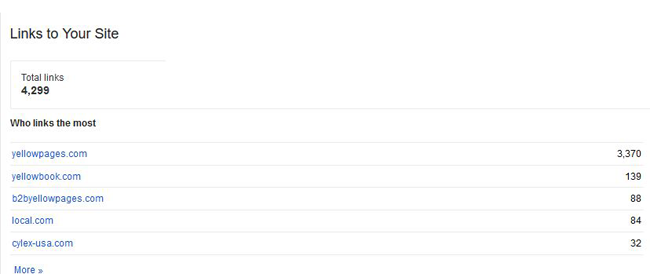
6. Internal Links
Internal links are any links connecting one page on your site to another page. Internal linking structure is often pushed aside to talk about other SEO methods, but it is extremely important. Let's say you have one page on your site that is the most important to rank for, you would want that page to have a lot of internal links from other related pages. This increases topical relevancy and sends "link juice" to important pages on your site. Aside from the ranking benefits, internal links are also important for helping people navigate your site. If you start them on a blog page, you can link internally to a service page. This advances them through your funnel and presents them with information they are likely seeking. You should also link to other pages that further explain or build upon key points of a page or post. This will guide users through the learning process, keeping them on your site longer, making them more likely to take action on your CTAs.

7. Sitemap Submission
I see people all the time talking about how to get their site indexed faster. Submitting a sitemap is the easiest way to do this. A good sitemap also makes it easier for Google to crawl your site. Setting "priority levels" on a sitemap can help guide the Googlebot as to which pages should be crawled first. This is considered more of a "suggestion" then a directive though, so they many not honor your priority listings. Either way, setting up a sitemap is pretty straightforward and submitting it is equally simple and worthwhile. If you are using Yoast for WordPress and similar plugins can be used to create a sitemap. If you have an html site, you can use one of the many free sitemap generators online to set one up, just be sure to "test" it before submitting.
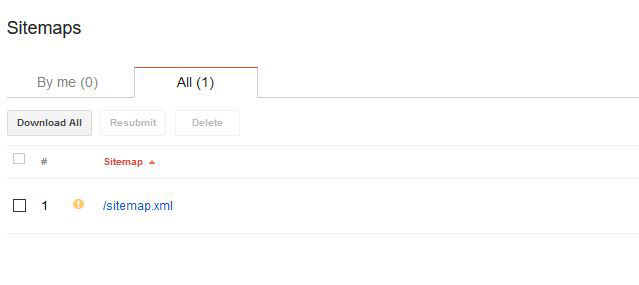
8. Site Errors
After Google has crawled your site, you can check this section to see if they found issues with your site. 404 pages are not necessarily bad, but if you have a lot of internal links to 404 pages, it can cause the Googlebot to hit a "dead end" of sorts and with only a limited number of pages getting crawled daily, you don't want to waste your "crawl budget" on 404 pages. If a 404 page is similar to another page on your site, set up a redirect to send users to the new or most relevant page. If you have links to a 404 page, you can 301 those to the homepage to preserve "link juice." Otherwise, just leave them alone and let Google remove them from their index when they update.
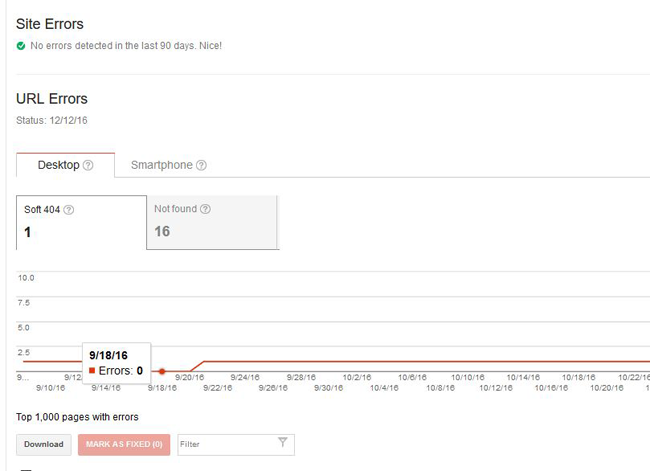
9. Search Analytics
This is where you can see the fruits of your labor. You can also discover pages or keywords that you may not be aware of performing well in search. As you can see below, you can see clicks, impressions, click through rate (CTR), and average position for some keywords/pages. Let's say you see a page that gets a lot of impressions and ranks in the top 5 on average, but has a low CTR. You can use that information to adjust the page title and meta description, potentially improving your CTR. Another use would be finding keywords just shy of sending traffic to your site. Look for keywords with an average position between 11 and 15. Improving the rankings for those terms just a few spots can lead to a boost in organic traffic.

10. Messages
The message dashboard alerts you to issues with your site. Sometimes the messages are general information like "improve your search presence" while other times they are specific, "hacked content detected." Even if you don't use any other features of Search Console, you should verify your site, so that you will be alerted if your site is hacked or receives a manual penalty. The sooner you know, the sooner you can start fixing your issues.

Summary
Although the 10 functions listed above are pretty simple to use, they can make a big impact on the overall rankings of your website when used to make corrections and improve the quality of your website. If you haven't already, I suggest reading through all the features of Search Console and how to set up data sharing with Google Analytics. Sometimes it is the most simplistic steps that are missed causing the biggest headaches for your site.









